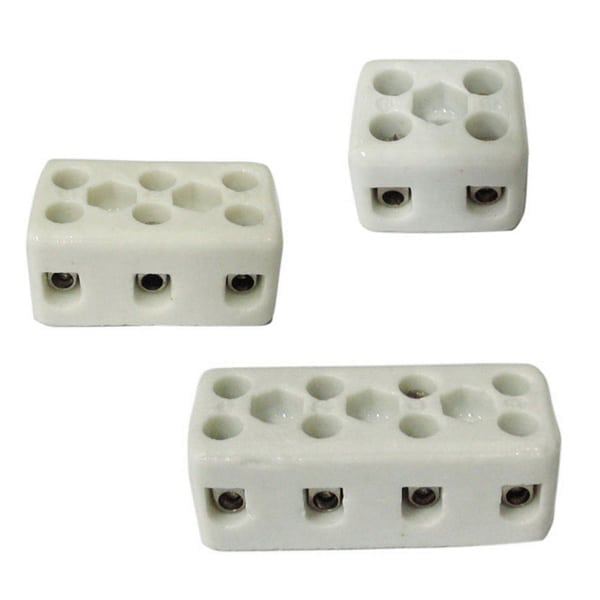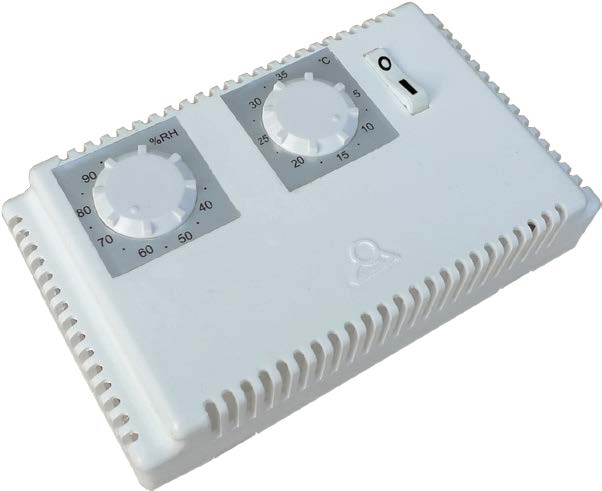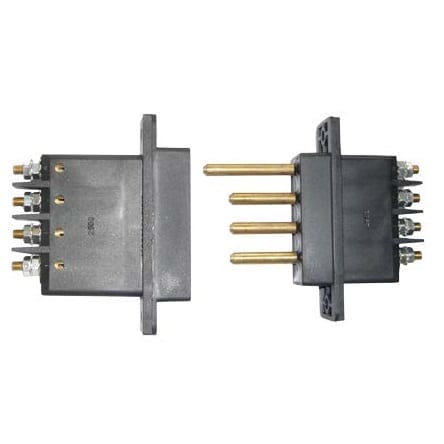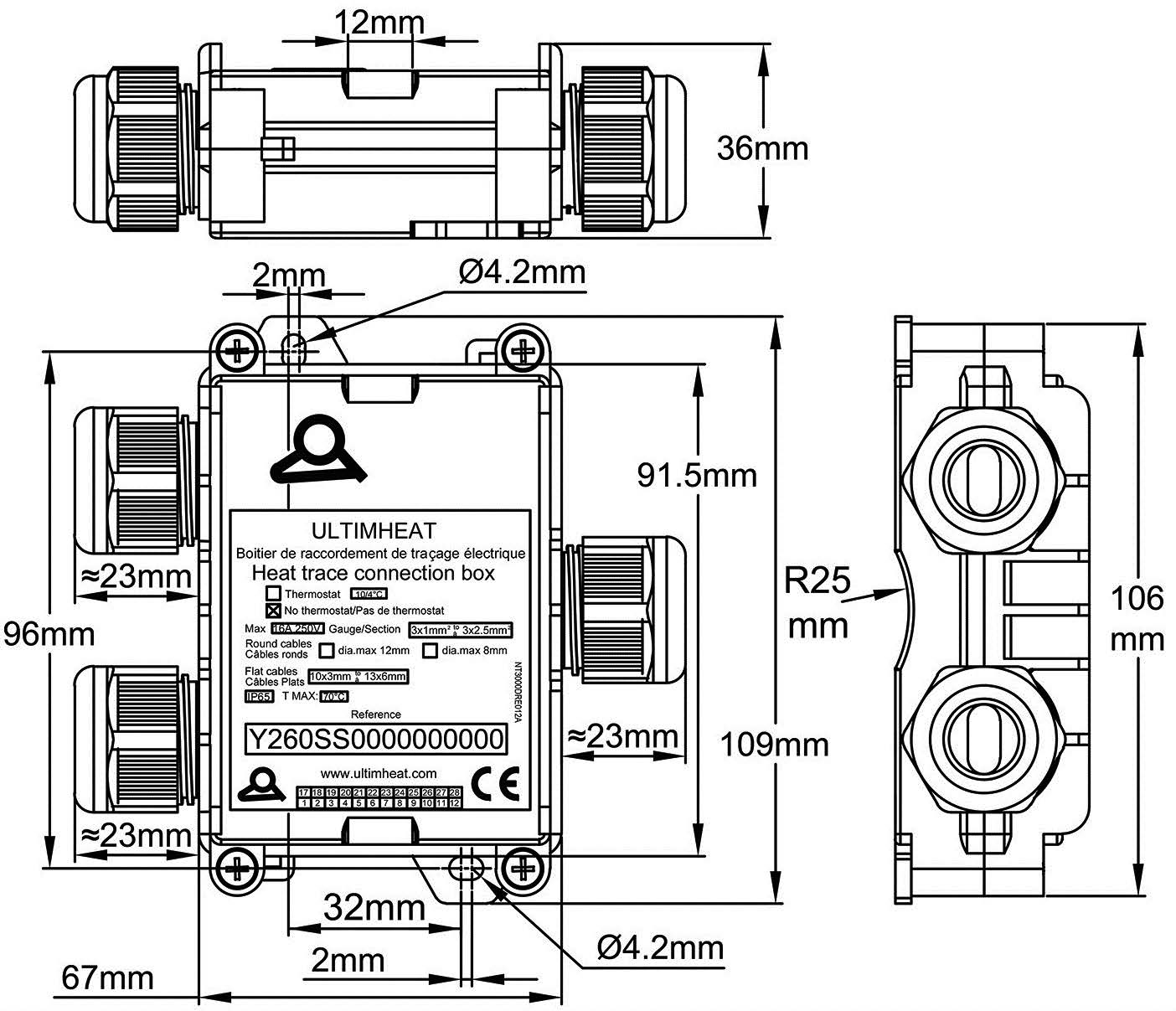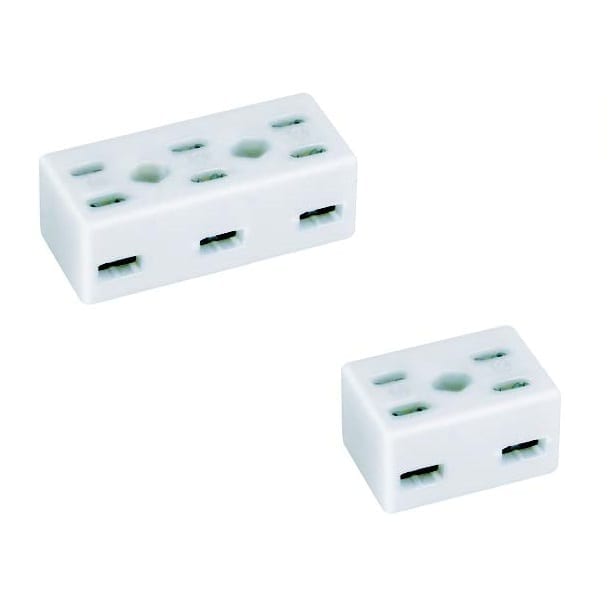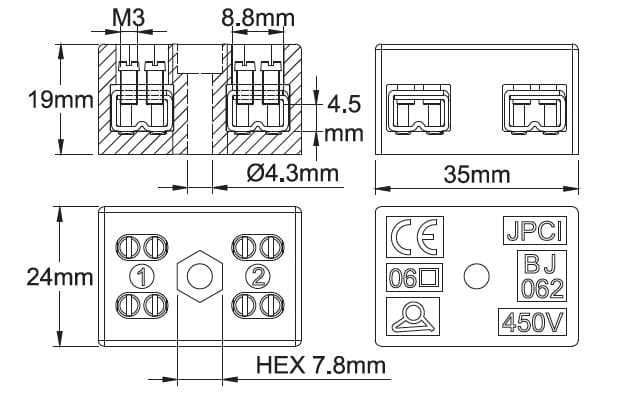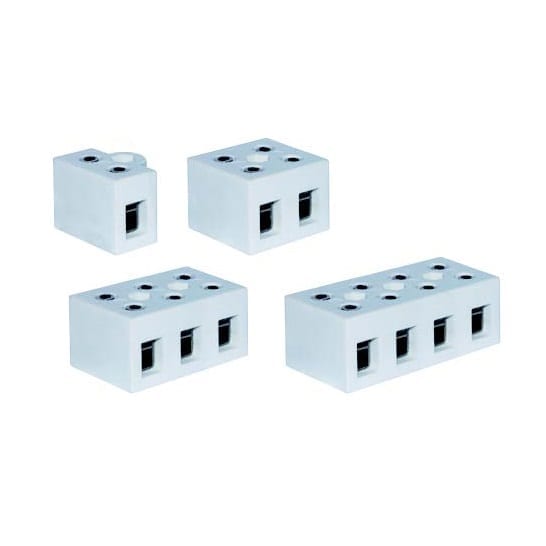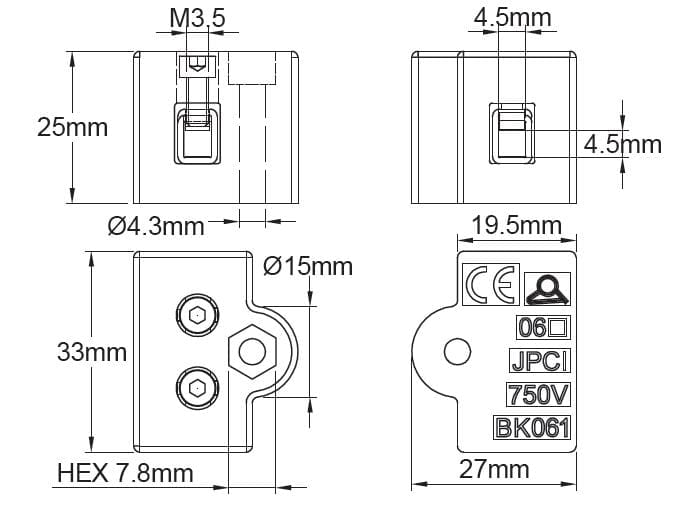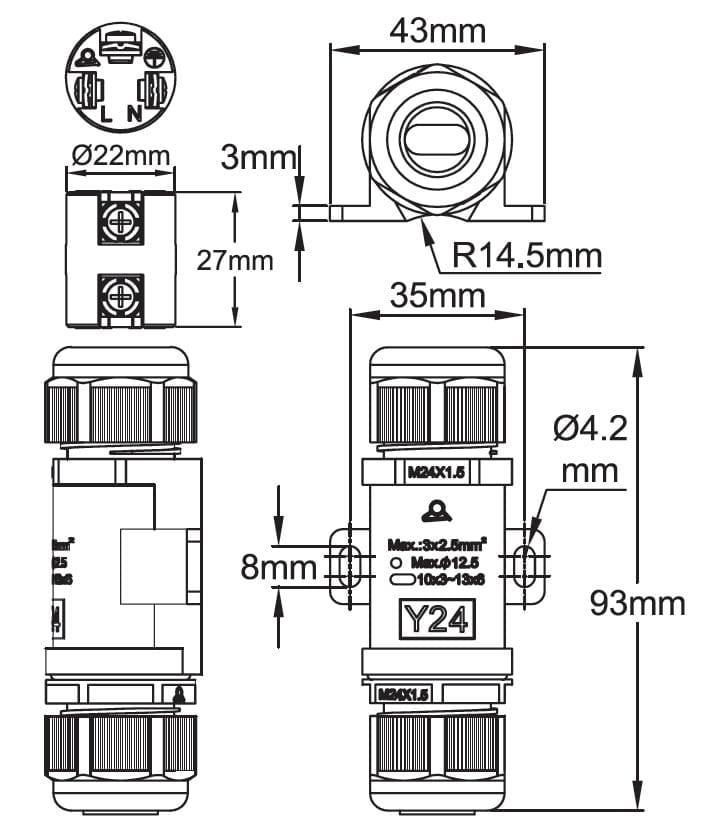Send an inquiry
Glazed ceramic connection blocks. Nickel plated connectors
€1.50 – €4.40
| Weight | N/A |
|---|---|
| Voltage | |
| Ways |
SKU: N/A
Categories: CONNECTION BLOCKS, Connection blocks
Tags: Screw terminal, connection block, terminal, wiring, ceramic, high intensity, CE
Ceramic: Ker 110 (feldspar ceramic Si02-Al2O3) glazed 5 sides.
- Bulk density : >2.3 g/cm3
- Water absorption : max 2% (on unglazed side)
- Flexural strength : 80 Mpa/cm²
- Coefficient of thermal expansion : <6 10-6 mm/°C (20-100°C)
- Volume resistivity : >1010 cm at 100°C
- Dielectric strength : 10 Kv/mm
- Terminal numbering: 1, 2, 3, 4
Screws: Nickel plated steel (Sae1045). Clamping with or without pressure plate upon types
Terminals: Nickel plated brass (63.5~68% Cu)
Maximum ambient temperature, as per EN60730-1(§14-1) :
- on ceramic: 425°C (800°F)
- on nickel plated brass connectors: 230°C (445°F)
Voltage: 250V to 400V upon types and sizes
Applicable standards: (IEC)EN 60998-1 and (IEC) EN60998-2-1 (August 1993)
 |
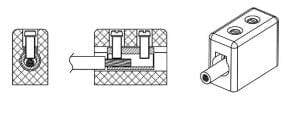 |
* Recommended clamping torque M3: 0.6 Nm, M3.5: 0.8Nm, M4 : 1.2Nm
** Test current upon IEC60998-1.
*** These ceramic blocs also exist with stainless steel pressure plate
Downloadable
Related products
Electromechanical humidistats
CONNECTION BLOCKS
4 or 5 pole connectors for commercial deep fryer heating elements
€59.30 – €62.00
Connection blocks
Technical informations associated to this product
-
AWG diameters and sections in mm²
AWG Diameter (mm) Section (mm²) AWG Diameter (mm) Section (mm²) AWG Diameter (mm) Section (mm²) 24 0.510 0.205 17 1.15 1.04 10 2.59 5.26 23 0.575 0.259 16 1.29 1.31 9 2.9 6.63 22 0.643 0.324 15 1.45 1.65 8 3.25 8.37 21 0.724 0.411 14 1.63 2.08 7 3.65 10.55 20 0.813 0.519 13 [...] -
Technical introduction of connection blocks made in ceramic and polyamide
Ceramic was the first insulating material used in the electrical connection terminals. Mechanically resistant, exceptionally fire resistant, excellent electrical insulator, it had all the qualifications. Produced from locally available raw materials, ceramic and porcelain glazed electro-technical parts were essential in the beginnings of electricity until the appearance of Bakelite in the 1930s, then of engineered thermoplastics to 1960.

